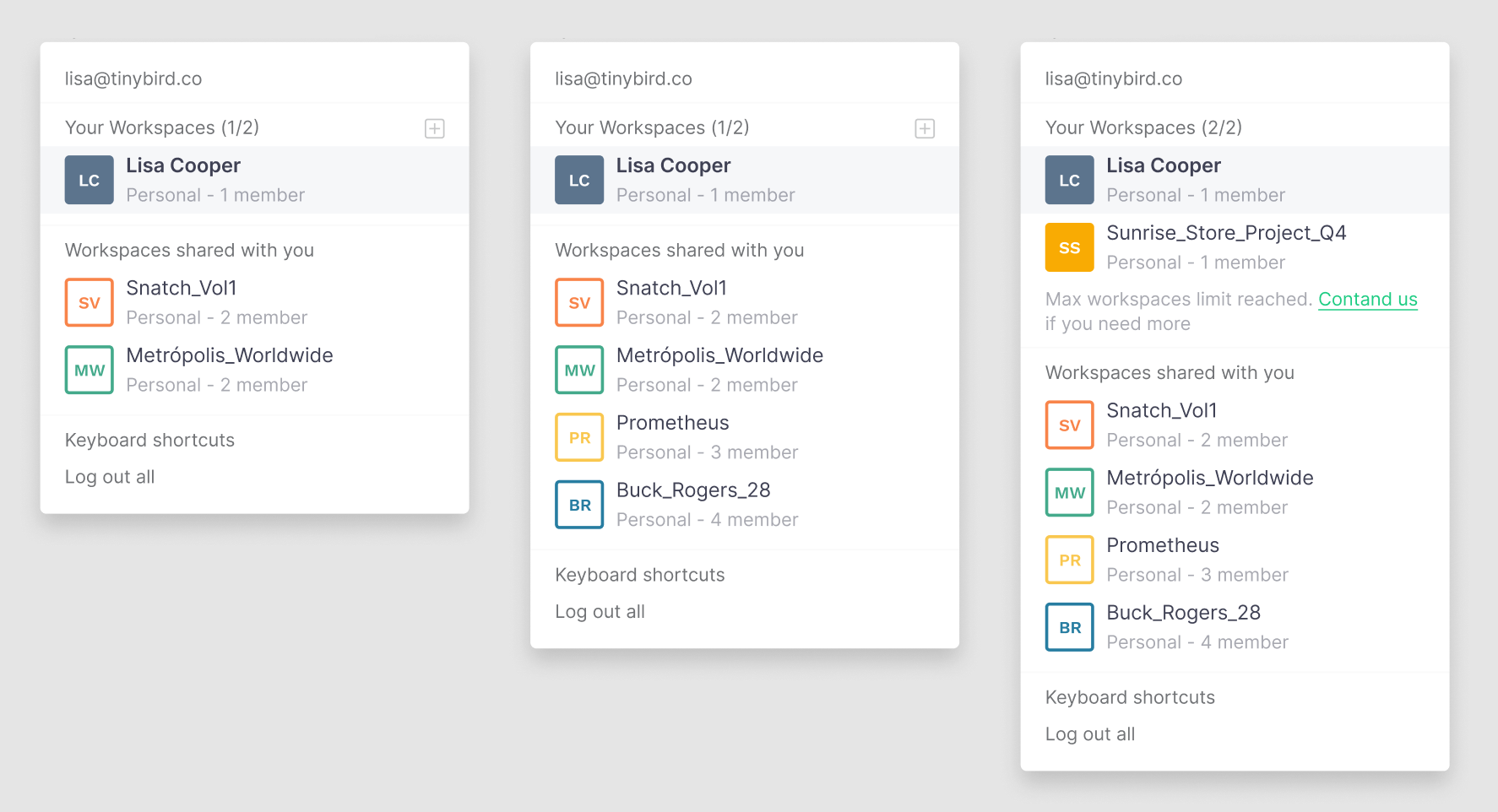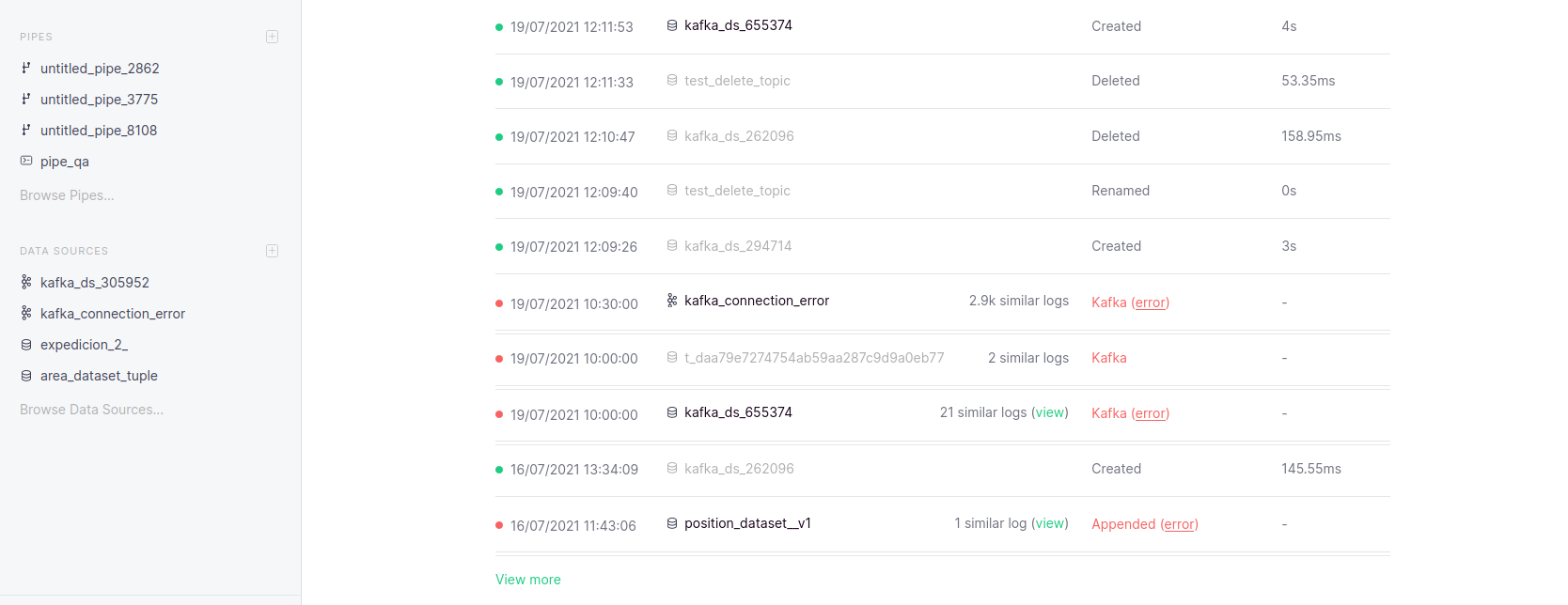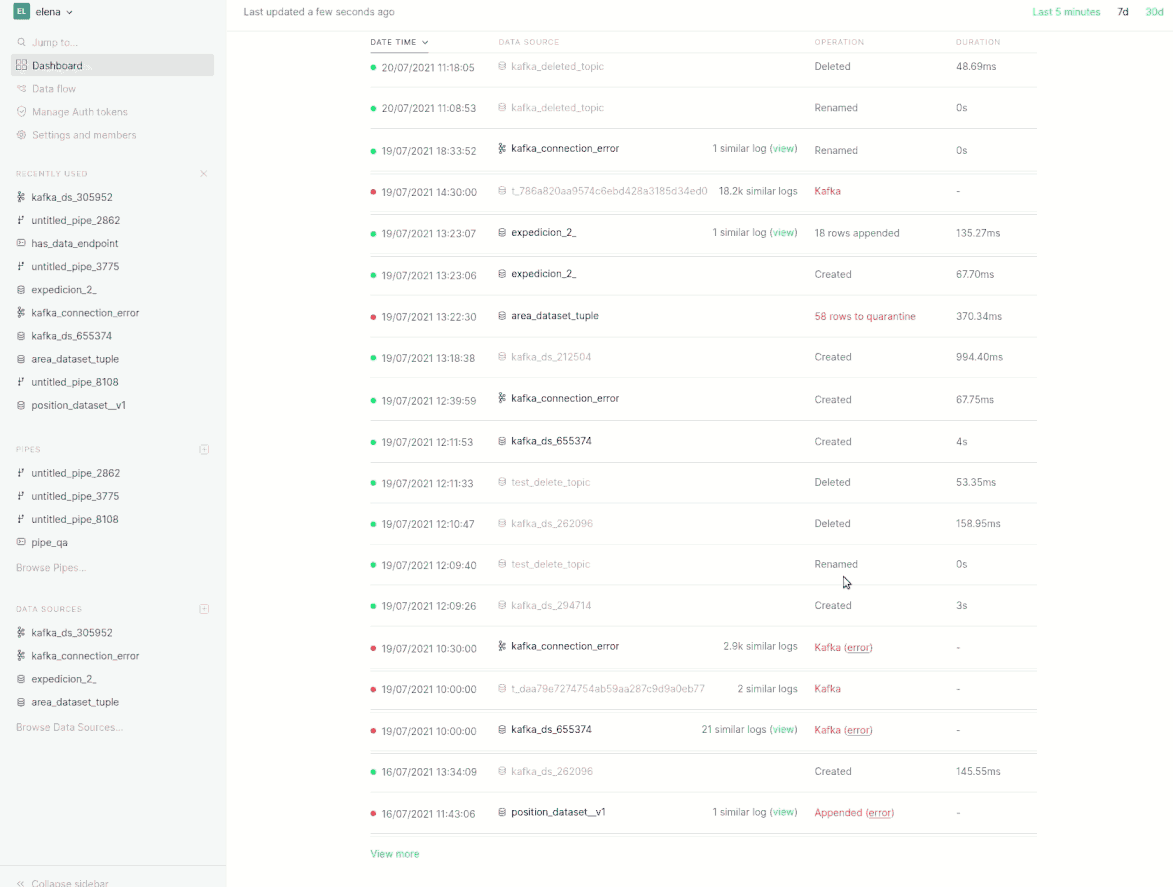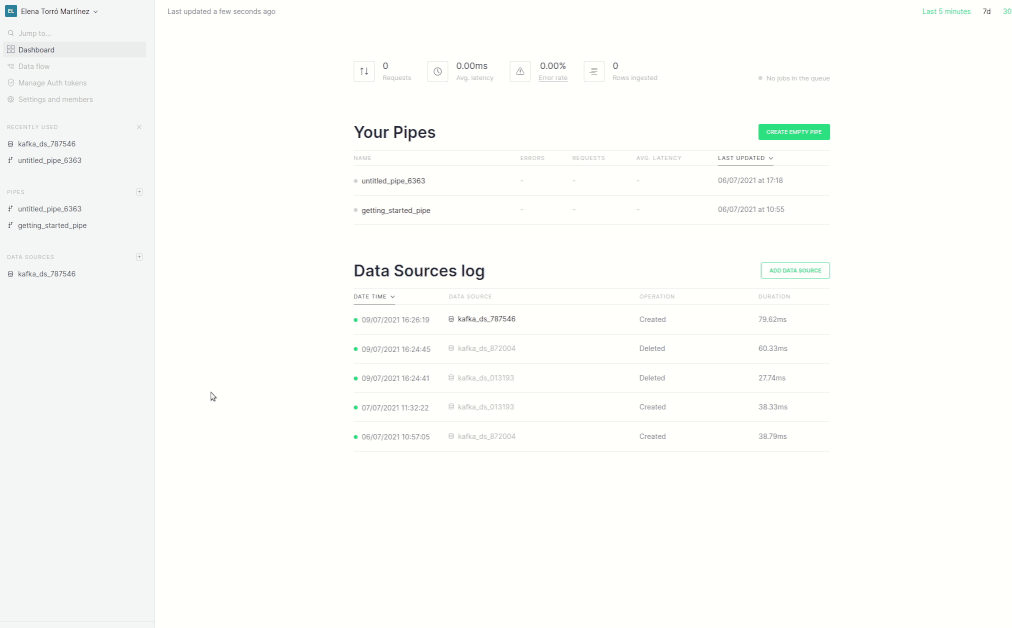Changelog #16: Improved Workspace selector, better autocomplete and more
Now you can see how many Workspaces you own, the autocomplete is smarter, the CLI and the Kafka connector are better than ever and more.

We’ve been working hard on Tinybird to keep improving developers’ experience when working with big amounts of data. Here are some of the latest changes:
A new Workspace selector
Before, it was hard to know which Workspaces were owned by you and in which ones had been shared with you.

A few weeks ago, Juanma Jiménez became our Head of Design. One of the first things he did was fixing this, and this is how it looks now:

A better autocomplete
Our autocomplete is now smarter and won’t be triggered if you type Ctrl, CMD, Alt, or the backspace, so that you’re less interrupted while writing queries and creating endpoints in our pipes.
A better flow when creating Workspaces
The process of creating Workspaces has changed for the better to enable other features to be possible like shared Data Sources. These are some of the changes:
- Now Workspace names have to be sanitized, meaning only letters, numbers and underscores will be allowed. To share a Data Source, you’ll need to change the name of its owner’s workspsace, if it’s not sanitized yet.
- Instead of assigning a random name to every new Workspace, we now allow users to set the Workspace name and include any members when they create one.
- Notifications will be displayed after creating of removing Workspaces.
- If you try to add a member who already belongs to the Workspace, we will display an error
- The Workspaces create button will provide more info about the pending Workspaces you have
CLI improvements
Our CLI also lets you do more things than before. To name a few:
- We added a new
–only-response-timesflag when pushing a pipe. It’ll just run regression tests related to checking response times. - The output of
tb [pipe|datasource|Workspace|job]ls is standardized now, returning a table for all operations. Before it’d return a list as well for some of them. - Now the
tb pullcommand also be able to get the schema of shared Data Sources. .tinybfiles are now prettified, so that you can read them better.- The
-hostnow lets you use URLs without a backslash. It would fail before without giving context on how to fix the error.
New (beta) features
We’ve been working on two features that some customers are already using in their production systems:
- Sharing Data Sources across Workspaces: this will let you have only one ingestion process and access data in a read-only mode from multiple Workspaces, to enable multiple use-cases.
- A Kafka connector, to ingest data directly from Kafka
If you’d like to use any of these features as well before they’re available for all users, ping us and we’ll activate them on your account.
These are the improvements we’ve made on these 2 upcoming features:
Shared Data Sources enhancements
- Data Sources in the Data Flow view show if they’re being shared with other Workspaces, and also which Workspace they come from.
- Also, users are now warned if shared Data Sources are being renamed.
Kafka connector improvements
- The Data Sources UI will show which Kafka Data Sources have any errors.

- When clicking on Kafka error in the list, it opens the DS modal and shows an error message
- When clicking on the error message, it opens the Connections modal, and the one with the error is selected

- Also, the append and replace operations are blocked from the Data Source option dropdown. In those Data Sources, data can only come from Kafka so it doeesn’t make sense to enable those options.
- And we’ve improved the process of creating a Kafka Data Source as well. This is how it looks like now:

